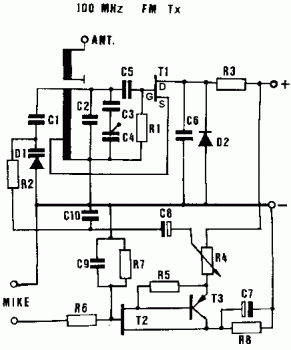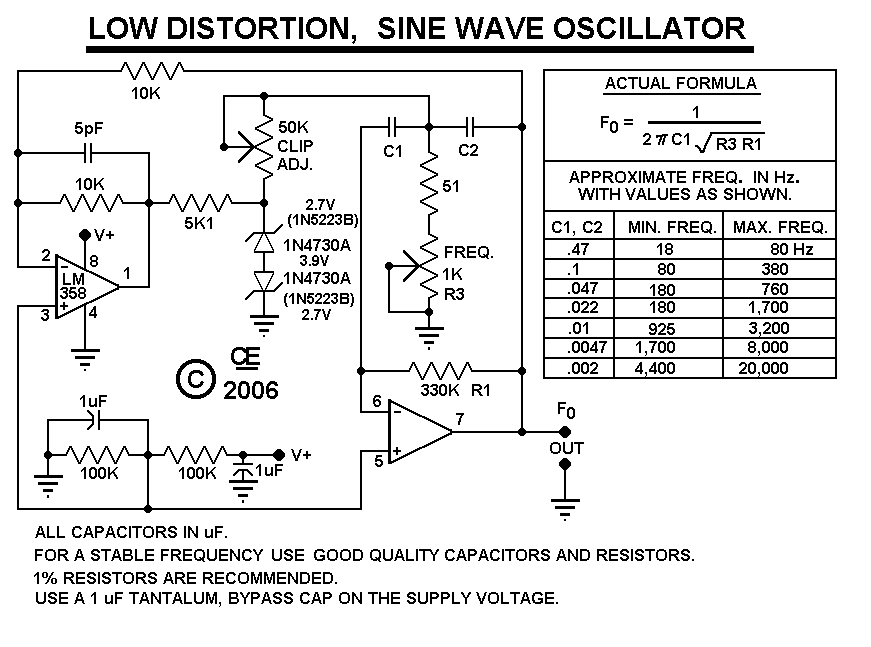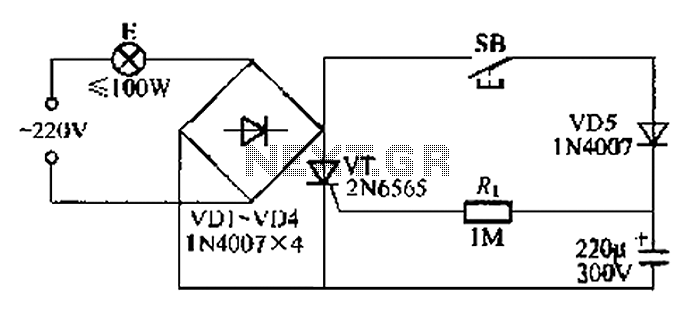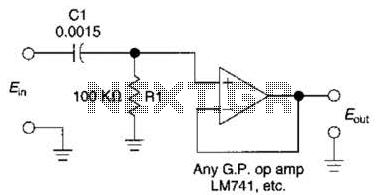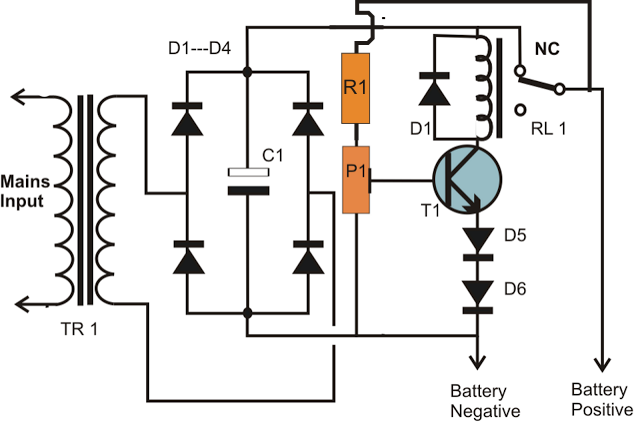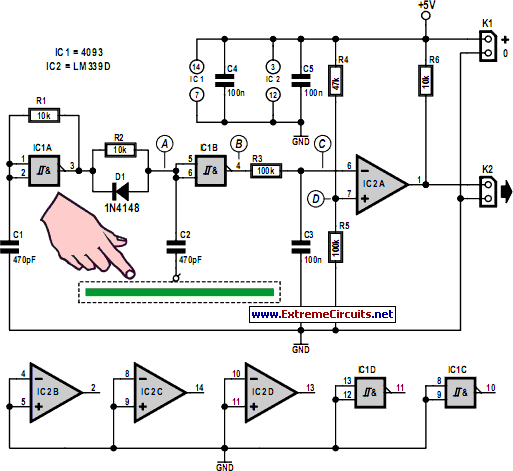
Simple AM radio
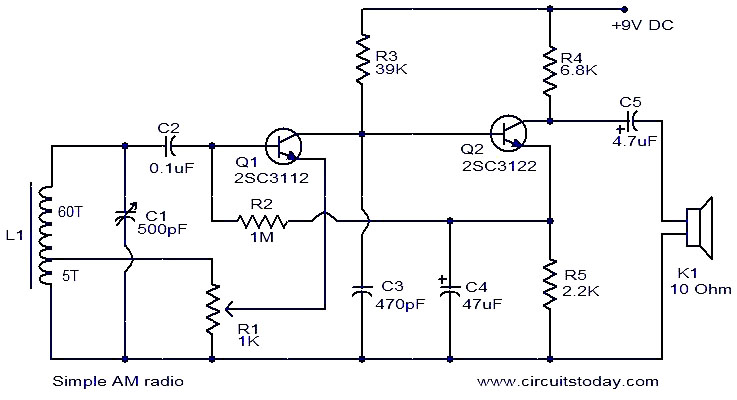
This is a straightforward AM radio circuit utilizing only two transistors. The coil L1 and variable capacitor C1 create the tank circuit. Transistor Q1 is responsible for demodulation, and the demodulated signal is accessible at the base of Q1. This audio signal is then coupled to the base of Q2 for additional amplification. The amplified audio signal can be found at the collector of Q2. It is important to note that this circuit functions effectively only in areas with strong signal strength.
The described AM radio circuit operates on the principle of amplitude modulation, where information is encoded in the amplitude variations of a carrier wave. The tank circuit, composed of the coil L1 and variable capacitor C1, is tuned to the desired radio frequency, allowing the circuit to selectively receive signals. The inductance of L1 and the capacitance of C1 are critical in determining the resonant frequency, which can be adjusted by varying the capacitance.
Transistor Q1 serves as the demodulator, converting the received RF signal into an audio signal. The base of Q1 receives the tank circuit output, where the RF signal is mixed with the local oscillator signal, resulting in the demodulated audio frequency signal. This audio output is weak and requires further amplification to be usable, which is where transistor Q2 comes into play.
Transistor Q2 amplifies the demodulated audio signal from the base of Q1. The amplified signal is then available at the collector of Q2, which can be connected to a speaker or further audio processing circuitry. Proper biasing of both transistors is essential to ensure they operate in the correct regions of their characteristic curves, optimizing performance and preventing distortion.
The circuit's performance is highly dependent on the strength of the incoming radio signal. In environments with strong signals, the circuit will function well, providing clear audio output. However, in areas with weak signals, the circuit may struggle to demodulate the signal effectively, resulting in poor audio quality or complete loss of reception. Therefore, this circuit is best suited for locations with reliable AM broadcast coverage.This is a very simple AM radio circuit using only two transistors. The coil L1 and variable capacitor C1 forms the tank circuit. Transistor Q1 does the job of demodulation. The demodulated signal will be available at the base of Q1. This audio signal is coupled to the base of Q2 for further amplification. The amplified audio signal will be availabl e at the collector of Q2. Please note that, this circuit will work properly only in places with good signal strength. 🔗 External reference
The described AM radio circuit operates on the principle of amplitude modulation, where information is encoded in the amplitude variations of a carrier wave. The tank circuit, composed of the coil L1 and variable capacitor C1, is tuned to the desired radio frequency, allowing the circuit to selectively receive signals. The inductance of L1 and the capacitance of C1 are critical in determining the resonant frequency, which can be adjusted by varying the capacitance.
Transistor Q1 serves as the demodulator, converting the received RF signal into an audio signal. The base of Q1 receives the tank circuit output, where the RF signal is mixed with the local oscillator signal, resulting in the demodulated audio frequency signal. This audio output is weak and requires further amplification to be usable, which is where transistor Q2 comes into play.
Transistor Q2 amplifies the demodulated audio signal from the base of Q1. The amplified signal is then available at the collector of Q2, which can be connected to a speaker or further audio processing circuitry. Proper biasing of both transistors is essential to ensure they operate in the correct regions of their characteristic curves, optimizing performance and preventing distortion.
The circuit's performance is highly dependent on the strength of the incoming radio signal. In environments with strong signals, the circuit will function well, providing clear audio output. However, in areas with weak signals, the circuit may struggle to demodulate the signal effectively, resulting in poor audio quality or complete loss of reception. Therefore, this circuit is best suited for locations with reliable AM broadcast coverage.This is a very simple AM radio circuit using only two transistors. The coil L1 and variable capacitor C1 forms the tank circuit. Transistor Q1 does the job of demodulation. The demodulated signal will be available at the base of Q1. This audio signal is coupled to the base of Q2 for further amplification. The amplified audio signal will be availabl e at the collector of Q2. Please note that, this circuit will work properly only in places with good signal strength. 🔗 External reference
